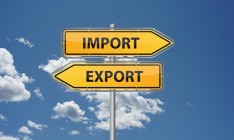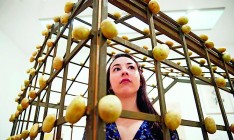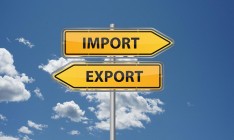Economy
tradeUkrainian business failed to compensate the damage from the loss of the Russian market
Ukrainian exporters had to spend this year under the slogan “Reorient or Die!” For those companies who were preparing for the signing of the Association Agreement between Ukraine and the EU back in 2013 this process has been the least painful. However, they were few. In many cases re-orientation was forced and unplanned due to the loss of the Russian market. That is why Ukrainian business for the most part turned out to be unready for emergence onto the European market. For the unprepared for European standards businesses the process of geographic re-orientation may take at least a year or even longer.
For the time being, many opportunities for supplies to the EU provided by Brussels have not been taken advantage of. Unilateral trade preferences, which the EU granted to Ukraine from April 23 to November 1 at first and then till the end of 2014 did not compensate the loss of the Russian market for our economy. In January–September 2014 trade export of Ukraine to Russia shrunk by 27% or US $3.3 bn, according to the State Statistics Service and calculations of Capital. At the same time, export to the EU increased by 11% or UAH $1.3 bn. In fact, only nine EU members increased purchases of Ukrainian products by more than 20%, while eight countries actually reduced their volumes of import.
Race favorites
Agrarians, specifically grain exporters, benefited most from the liberalization of trade with the European Union. At that, they were not affected by the limitations of supplies to Russia. Having lost only US $0.8 mn from supplies of grain to Russia over nine months, agrarian producers increased their sales to the EU by US $389.3 mn. The secret of their success is that they had a good understanding of the European market even prior to the introduction of the preferences. Grain can be exported from Ukraine to EU duty free under licenses issued by the Directorate-General for Agriculture and Rural Development. Starting from April 23 the tariff quota for duty free supplies of corn was set at 400,000 t, wheat – 950,000 t and barley – 250,000 t. At first, Ukrainian exporters showed little interest in registering grain crop supplies on a quota basis. Over the three months of the special trade regime none of these quotas were used by more than 15%. The companies had no reasons to ask their European contractors to register licenses for duty free export, because the import of corn, wheat and other grain crops was not charged with duties even prior to the introduction of the preferences.
However, starting from July 16 Brussels raised the import duty for corn, sorghum and rye, which since 2010 was zero, to EUR 5.35 per ton and the situation with usage of quotas improved. By July 25 the quota for corn was fully used, according to ProAgro. That is why further export of corn to the EU was charged with duties, which were raised again in September to EUR 10.44 per ton. Also, the quota for wheat was fully used by the beginning of autumn. Barley has remained the only grain crop quotas for which are still available.
Be that as it may, grain exporters are an exception to the rule. For all other crop producers for which Moscow limited access to its market, simplification of access to Europe turned out to be a weak compensator. For instance, the Federal Service for Veterinary and Phytosanitary Surveillance (FSVPS) banned supplies of Ukrainian juices starting from July 27. Because of this juice manufacturers lost US $30.3 mn in sales to Russia. Initially, their appearance on the EU market was triumphant – they exhausted the 10,000 t quota for supplies of grape and apple juices in less than a month. However, overall exports to the European market did not increase over three quarters. On the contrary, they even decreased by US $11.9 mn. Also, starting from July 29 Russia banned canned fruit and vegetable products from Ukraine.
Producers of canned vegetables containing vinegar lost US $6.1 mn in January-September due to this prohibition. However, in the EU they increased sales only by US $0.3 mn. Moreover, producers of canned tomatoes, just as juice producers, also fully used the quota for supplies of 10,000 t of their products to EU, but failed to make up for the lost earnings. They managed to increase sales to the EU by US $7.1 mn, while supplies to Russia dropped by US $9.6 mn.
No entry
Full use of European quotas does not guarantee that the supplies to the EU grew enough to compensate for the damage inflicted by Russia. Moreover, these quotas do not ensure an increase in export to the EU. If it is not about crop products, the quotas are only a formality. Domestic companies often have no real possibility to increase exports at least within the limits of the quotas, which means they don’t have a chance to compensate for the loss of the Russian market. Take, for instance, manufacturers of animal products, which became the major victim of the trade war between Moscow and Kyiv.
In the middle of June the FSVPS reduced to two the number of checkpoints and warehouses for temporary storage of animal husbandry products supplied directly from Ukraine. Then, starting from June 30 the authority demanded additional documents for import from Ukraine of products containing raw materials of animal origin. Moscow also applied specific limitations against certain companies. As a result, meat and meat products manufacturers fell short of US $69.2 mn in exports to Russia over nine months. At the same time, they only managed to increase supplies to the EU by US $34.1 mn. With the EU quota of 12,000 t of veal a year, they sold only 125 kg to that market in January-September 2014, including five months of the effect of preferences. For pork the quota is 40,000 t against the 1.9 t that was actually exported. The quota for poultry meat is 36,000 t and it was used by nearly a third.
This situation can be explained by the fact that among all meat producers, only chicken producers have real access to the EU. In summer 2013, the two largest producers of chicken meat – Myronivskiy Khliboprodukt (MHP) and Agromars Complex – obtained the right to supply their products to the European market. In particular, MHP supplied the first shipments of Ukrainian chicken meat in autumn 2013 and managed to fully increase them in summer of this year. The press service of MHP reported that the volume of the company’s exports to EU countries increased approximately to 7,400 t of chicken meat in Q3 2014, which is nine times higher than the indicator of Q1 and 2.8 times higher than in Q2. Thus, during the period of the preferential export regime the holding company sold around 10,000 t to the EU. The Netherlands became the main market for MHP – the country increased purchases of poultry meat from Ukraine from 79.4 kg in three quarters of last year to 8,400 t over the same period of 2014. The Netherlands provided US $27.2 mn of US $34.1 mn increase in meat and meat products exports from Ukraine to the EU in January-September.
Meanwhile, producers of pork and veal are not allowed yet to import products to the EU, which is why they cannot use their quotas. Director of the Legal and Lawmaking Department at the Ministry of Agrarian Policy and Food Ihor Chudovskiy says that around 90-95% of Ukrainian meat producers are not ready for full-scale work with the EU. This is primarily due to the technologies of cattle breeding. Poor sanitary conditions, low quality of fodder and improper storage of products are among the main violations, according to Chudovskiy. In order to receive permission for import to the EU meat manufacturers must pass inspections of the Directorate-General of Health and Consumers (SANCO). However, the schedule of future inspections has not yet been set. General Director of the Ukrainian Club of Agrarian Business Volodymyr Lapa says it must be announced by the end of December. This means that even those producers that pass the exam will not be able to begin supplies of meat to the EU earlier than in the end of 2015 or the beginning of 2016.
A spoonful of honey
The situation with milk products manufacturers is similar. In April Moscow imposed an embargo on the import of products of the companies Milk Alliance and Almira. In the beginning of July Russia added a ban on supplies of milk and milk products manufactured at seven enterprises of Milkiland-Ukraine. Starting from July 28 the FSVPS introduced a prohibition on import of all Ukrainian milk products and products containing milk.
Moreover, starting from October 13theRussian Federal Service for Surveillance on Consumer Rights Protection and Human Well-being (Rospotrebnadzor) added to the list cheeses produced in Ukraine. As a result, the export of milk and milk products, eggs and natural honey to Russia dropped 55% over nine months or by US $146.6 mn against the corresponding period of 2013.
However, the manufacturers never managed to compensate for this loss by working on the European market.
Supplies of these products to the EU increased only by US $16.5 mn, mainly thanks to export of honey. Domestic producers sold 16,000 t of honey to the EU increasing earnings by US $15.8 mn compared with the three quarters of 2013. Thanks to the increase in supplies to Spain and Italy they fully used the annual quota of 5,000 t over three and a half months of the effect of the trade preferences. At the same time, supplies of dairy products did not increase much. Supplies of milk and cream to Russia dropped by 3.9 t to 791.6 kg, while exports to the EU increased by only 436 kg to 8.7 t. Supplies of cheese to Russia dropped by 25.7 t to 11.7 t, while to the EU they increased by 1.1 t to 2.4 t.
There is a prohibition on the import of milk and dairy products from Ukraine to the EU. According to Chudovskiy, to date 66% of the companies in the dairy industry do not meet EU standards. Primarily antibiotics and palm oil are found in dairy products. Only companies inspected and approved by SANCO will be able to begin exports to the EU. The SANCO mission inspected dairy companies from September 28 to October 2. “If the results of the inspections are positive, the Ukrainian producers will be able to begin export of dairy products to EU,” assures Lapa. However, just as in the case with milk, this is a medium-term issue. The results of the inspections are expected only in May. So, if the EU permits the first supplies of these products will take place only in the second half of 2015, believes Lapa.
For now, Ukrainian producers are finding their ways around to the European market. For instance, Milkiland is developing the European market through its Polish company Ostrowia. “We are currently selling cheese (to the EU – Capital), which we produce in Poland. We are developing contracts and brands and then we will be able to add produce from Ukraine,” says Chief Executive Officer of Milkiland Anatoliy Yurkevych.
Closed doors
Non-compliance of Ukrainian products with European tastes is the problem that is standing in the way of re-orientation of exports from Russia to the EU not only for manufacturers of meat and dairy products, but also for the majority of industrial non-oil-and-gas companies. Domestic machine engineering is the most vivid victim of these circumstances. “Historically machine engineering was divided in half – the production remained in Ukraine, while the demand for the finished products – in Russia,” tells Senior Analyst at ART Capital Andriy Andreychenko. “Major investments are required in order for Ukrainian products to meet more fastidious European demand.” However, neither in 2014 nor, most likely, in 2015 will the investors dare to make major capital investments into the Ukrainian economy, because for as long as the war persists the safety of investments remains questionable. Therefore, only the companies already working in Europe can expect to profit from re-orientation of exports from Russia to the EU, just as in the case with agrarians.
For example, manufacturers of railway locomotives have had a difficult time. Their exports to Russia dropped by 63% over three quarters causing US $890 mn in losses – the largest among all industries. Formally, there are no longer any limitations to their supplies to Russia. Moscow introduced them first in the summer of 2013 when the Federal Customs Service of Russia toughened control of cargoes exported by over 40 Ukrainian companies in July. Among the latter were the manufacturers of railway locomotives and rolling stock – Dniprovahonmash, companies of the Azovmash Group, Stakhanov Railway Car Works and the manufacturer of car casting Kremenchuk Steel Works. Moscow dealt another blow to machine engineering in September-October when the Russian Federal Budget Institution Register of Certification on Federal Railway Transport suspended the import of railcars of four plants, which account for 80% of Ukrainian output – Kryukiv Car Building Works, Azovmash, Dniprovahonmash and Stakhanov Railway Car Works. Officially, these limitations were cancelled, but in practice the supplies of these Ukrainian companies to Russia collapsed.
Domestic manufacturers did not manage to redirect supplies of locomotives to the EU. In January-September European purchases of Ukrainian locomotives for the amount of US $62 mn did not compensate even for a tenth of the losses in Russia. “Europe may be interested only in high-tech products, which will be cheaper here due to the cheap labor force,” believes Andreychenko, for instance high-speed electric trains of the Kryukiv Car Building Works, which are being tested now. The problem is that the Europeans look not only at the price, but also at the life cycle cost, the expert pointed out. Since our manufacturers have not established operation of maintenance centers and servicing mechanisms in Europe, their products turn out to be costlier for Europeans in the long term.
Also, buses and trolleybuses manufactured at Bohdan, car components and power converters – the products that are already supplied to Europe – have changes in developing on the European market. However, in terms of re-orientation Ukrainian machine engineering should count more on Asia and Latin America, Andreychenko believes.







 of the agreement of syndication with Financial Times Limited are strictly prohibited. Use of materials which refers to France-Presse, Reuters, Interfax-Ukraine, Ukrainian News, UNIAN agencies is strictly prohibited. Materials marked
of the agreement of syndication with Financial Times Limited are strictly prohibited. Use of materials which refers to France-Presse, Reuters, Interfax-Ukraine, Ukrainian News, UNIAN agencies is strictly prohibited. Materials marked  are published as advertisements.
are published as advertisements.